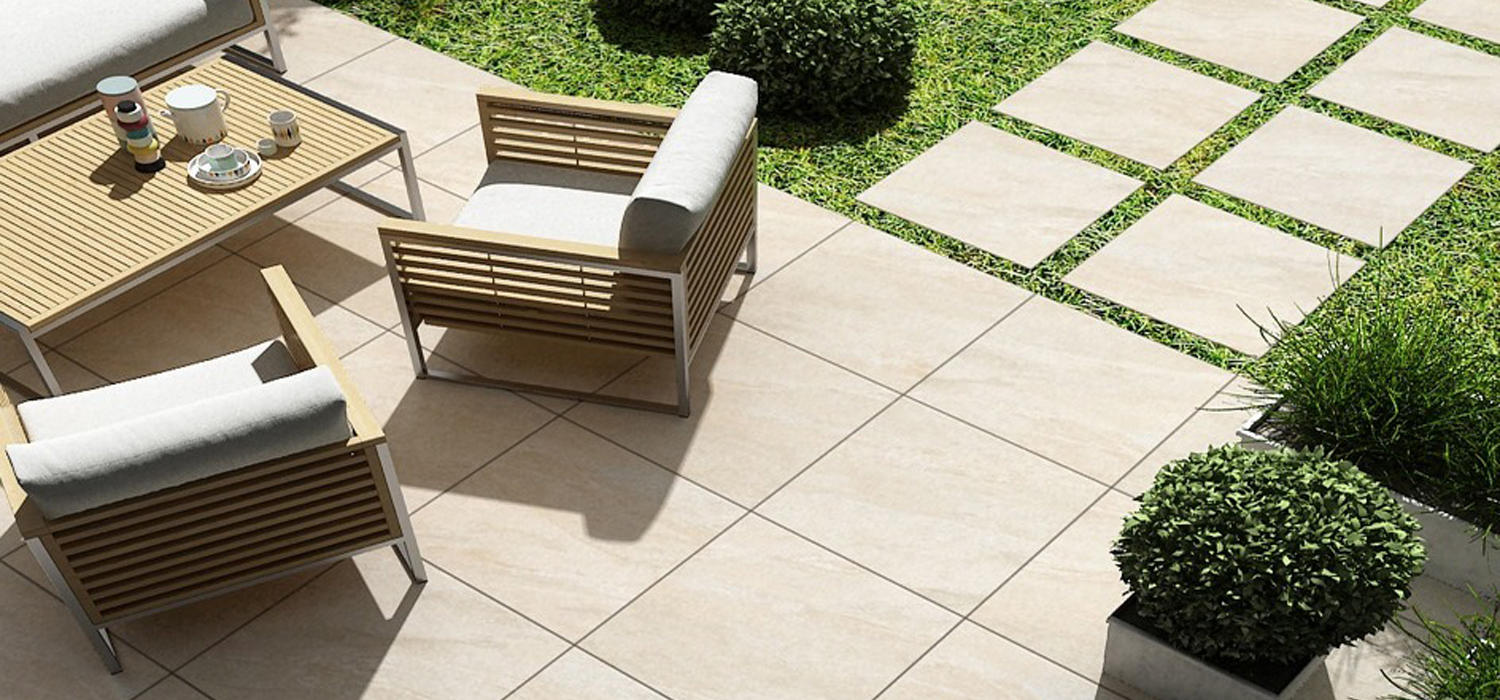Porcelain vs. Indian Sandstone: What’s the Difference?

Porcelain vs. Indian Sandstone: What’s the Difference?
So, you're on the hunt for the perfect paving – but you're caught between a sea of sandstone and a wave of porcelain. It’s a lot to take in, and we get it – choosing the right patio material isn’t as simple as it first seems.
Isn’t paving just… paving? Not quite.
At Discount Porcelain Superstore, it’s our job to make sense of it all. So here’s your no-nonsense guide to the key differences between Porcelain Paving and Indian Sandstone – helping you choose what’s right for your garden, your style, and your budget.
The Basics: What They’re Made Of
Let’s start with what they’re made from.
-
Indian Sandstone is a 100% natural product, ethically sourced from India. It’s shaped by nature over thousands of years – meaning each slab has unique tones and textures.
-
Porcelain Paving, on the other hand, is a man-made material created by firing clay, sand, and other minerals at high temperatures. The result? A sleek, ultra-durable surface with a consistent 20mm thickness and built-in anti-slip finish.
The difference in origin also means differences in porosity.
-
Sandstone is porous – it absorbs water and will weather naturally over time.
-
Porcelain is non-porous, which means it resists water, stains, and dirt – but it does require a slurry primer during installation to help it bond properly.
The Look: Style & Personality
Your patio is an extension of your home, so it has to suit your vibe.
-
Porcelain Paving is the go-to for sleek, modern aesthetics. With a massive range of styles, including stone, concrete, marble and even wood-effect finishes, it’s ideal for contemporary spaces. It’s also scratch- and stain-resistant – so no stress if you drop your drink or the kids bring half the garden back inside.
-
Indian Sandstone brings charm and character. No two slabs are the same, and the natural riven texture adds that rustic, lived-in look. Over time, sandstone weathers and develops even richer tones – a patio that matures with your garden. It’s perfect for cottage gardens, traditional homes, and anyone who loves a more organic feel. Plus, it’s the eco-conscious choice, with minimal processing and fewer chemicals used in production.
The Maintenance: Keeping It Looking Fresh
Every outdoor space needs a little care – paving is no exception.
-
Sandstone, being porous, benefits from sealing. A good sealant protects it from moisture, staining, algae growth, and UV damage. Re-sealing every 2–3 years will help it stay looking its best – especially in high-traffic areas.
-
Porcelain, thanks to its non-porous surface, is naturally low-maintenance. It shrugs off dirt, spills, and the unpredictable British weather. A quick hose-down is often all it takes. It’s a dream for busy families, pet owners, or anyone who doesn’t fancy scrubbing the patio every weekend.
The Cost: What Will It Set You Back?
Here’s the deal:
-
Indian Sandstone tends to be the more budget-friendly option upfront. It’s long-lasting, easy to source, and even with the added cost of sealant, it offers great value for money.
-
Porcelain Paving sits at a slightly higher price point – but you’re paying for durability, ultra-low maintenance, and a refined, modern finish.
The Verdict
-
Want a modern, clean, and ultra-durable patio? Go Porcelain.
-
Prefer natural charm, variation, and timeless character? Indian Sandstone is for you.

